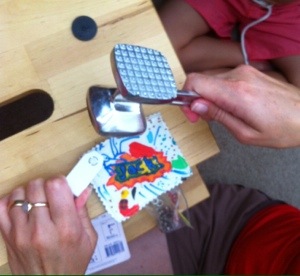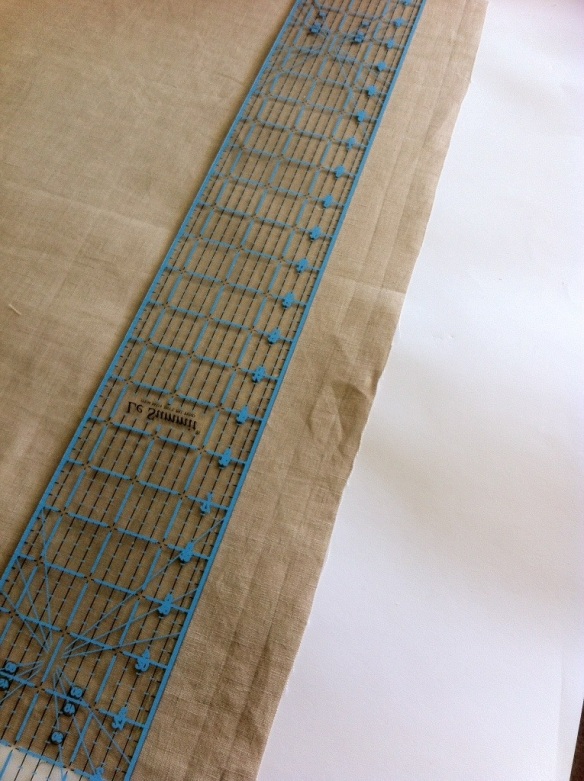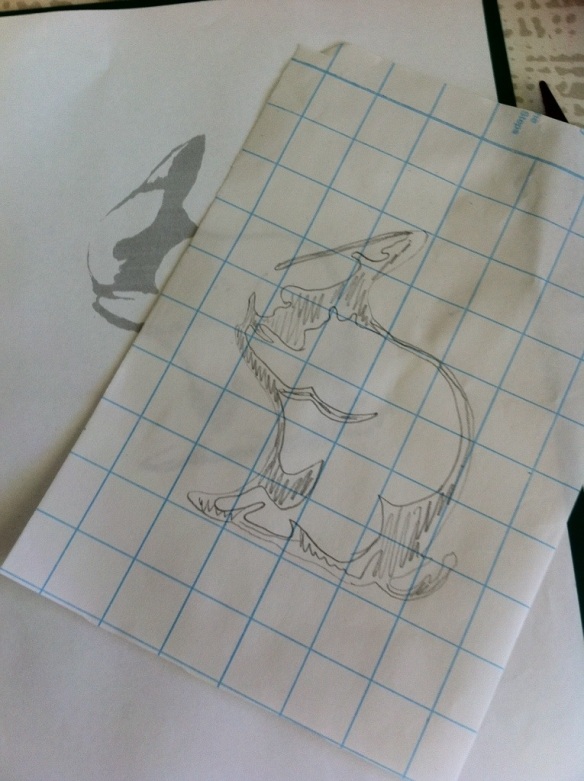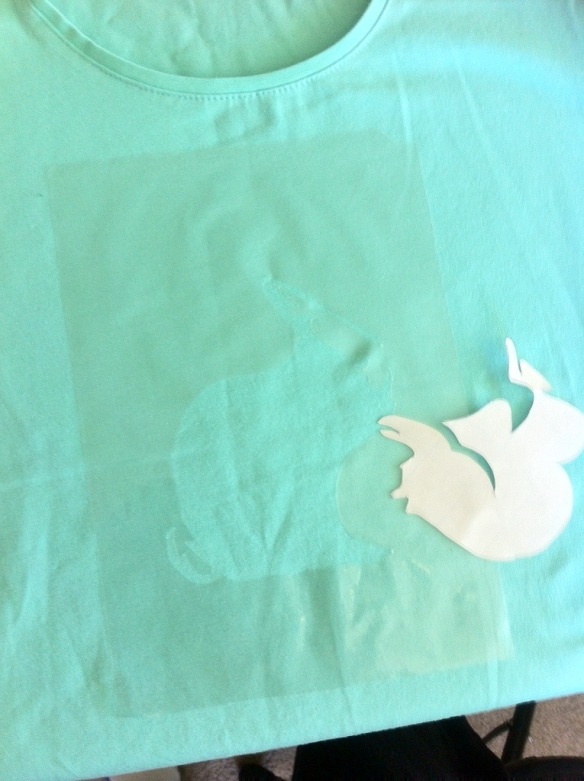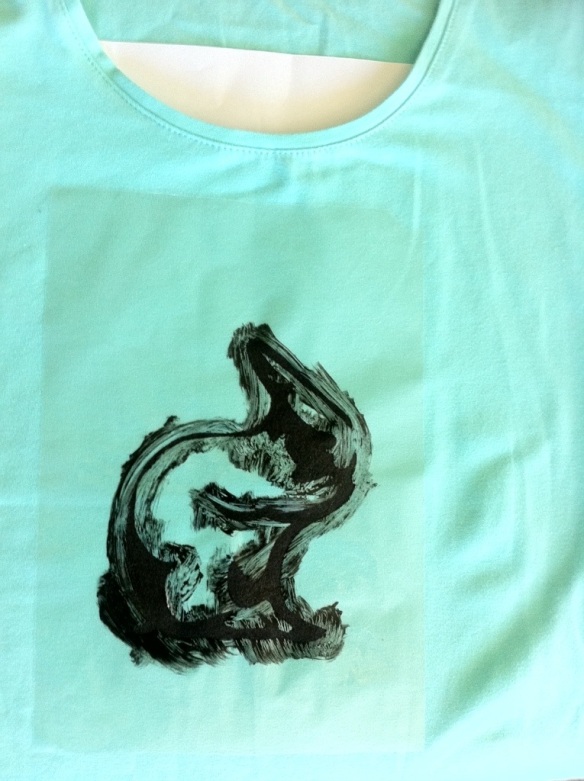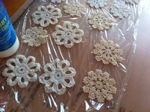This is a fun little project for your kids to do along with your help. There are a few materials required but once you have them you make make more bag tags for years to come. It is also a quick project, well that depends on how meticulous they are in their drawings. My daughter took forever.
Materials required:
– plain cotton and pattern for the reverse.
– felt
– fabric markers
– pinking shears
– eyelets and tool for insertion
– circle clip to hang to bag ( the name eludes me at the moment)
Okay let’s get started.
1. Cut out your plain fabric shape. You chose how big or what shape you want ( or should I say your child).
2. Give them the fabric markers and let them design their little hearts out. I taped the fabric to the table to stop it from slipping.

3. When finished iron fix the design. Follow instructions from your fabric makers.
4. Cut out the patterned fabric and felt to the same size as your design piece. The felt will go in the middle to give it structure.
5. Using the sewing machine, sew the three layers together. A quarter inch from the edge. Use the pinking shears to clip the edge. This will prevent fraying.
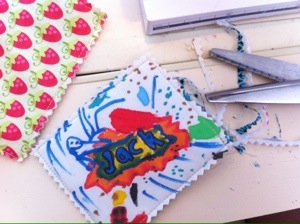
6. Using the instructions from your eyelet packet insert the eyelet into one corner. I broke my tool ages ago so I have to hammer upside down but it’s really simple to do.
6. Last job to do is to put on the circle clip and attach to bag. The name will come to me eventually but for now all I can tell you is that I got it from a stationary shop for 20c.
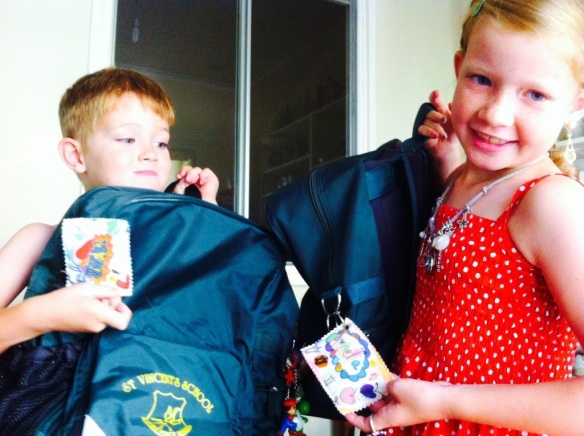
Voila, two happy campers.
Unique and personal name tags that helps them (my two) find their bags in a sea if green.
Happy crafting!!


